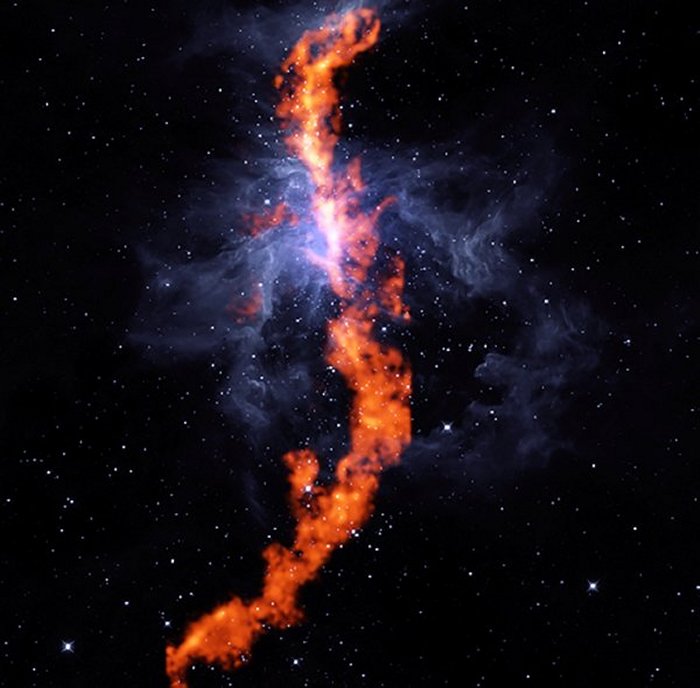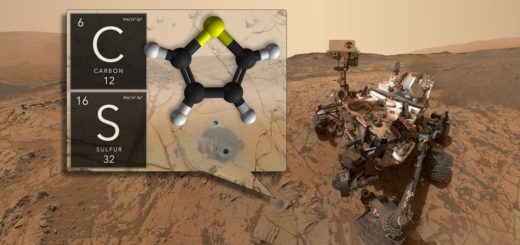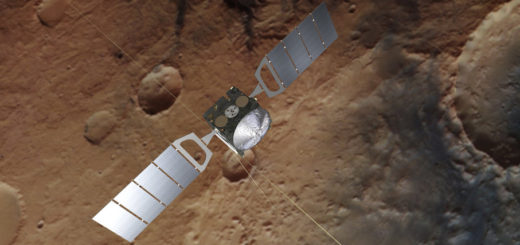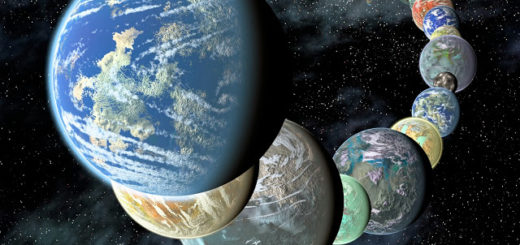Largest Image Ever Of The Orion Molecular Cloud Released By Astronomers
Astronomers have created the largest image ever of the dense band of star-forming gas that weaves its way through the northern portion of the Orion Nebula. The image is stunning!
Located about 1,600 light years away the Orion Molecular Cloud (OMC) is a large group of bright nebulae, dark clouds, and young stars in the Orion constellation. The cloud is hundreds of light-years across.

Astronomers have now studied a 50 light-year long filament of star-forming gas that is wending its way through the northern portion of the OMC known as Orion A.
A ribbon of ammonia, a tracer of star-forming gas in the Orion Nebula as seen with the GBT (orange). Background image in blue is a WISE telescope infrared image showing the dust in the region.Credit: GBO/AUI/NSF; J.Pineda, MPE; NASA/JPL-Caltech/UCLA/WISE/A.Meisne
Using the National Science Foundation’s (NSF) Green Bank Telescope (GBT) in West Virginia, astronomers successfully produced an image of the Gould Belt which is an extended ribbon of bright, massive stars stretching about 3,000 light-years in an arc across the sky.
The GBT rendered this image by detecting the faint radio signals naturally emitted by molecules of ammonia that suffuse interstellar clouds. Scientists study these molecules to trace the motion and temperature of vast swaths of star-forming gas.
This first release covers four distinct Gould Belt clouds, one located in Taurus, one in Perseus, one in Ophiuchus, and Orion A North in Orion.
“We hope to use these data to understand better how large clouds of gas in our galaxy collapse to form new stars,” said Rachel Friesen, a Dunlap Fellow at the Dunlap Institute for Astronomy and Astrophysics at the University of Toronto in Canada.
“The new data are critical to assessing whether certain gas clouds and filaments are stable and enduring features or if they are undergoing collapse and forming new stars.”
The new GBT image is combined with an infrared one taken with NASA’s Wide-field Infrared Survey Explorer (WISE) telescope. The composite image illustrates how star-forming gas in this region relates to the bright stars and dark, dusty regions of the nebula.
#s3gt_translate_tooltip_mini { display: none !important; }



 Creators of mankind
Creators of mankind Description of “Tall white aliens”
Description of “Tall white aliens” Where they came from?
Where they came from? About hostile civilizations
About hostile civilizations The war for the Earth
The war for the Earth “Tall white aliens” about eternal life
“Tall white aliens” about eternal life Video: “Nordic aliens”
Video: “Nordic aliens” Aliens
Aliens Alien encounters
Alien encounters The aliens base
The aliens base UFO
UFO Technology UFO
Technology UFO Underground civilization
Underground civilization Ancient alien artifacts
Ancient alien artifacts Military and UFO
Military and UFO Mysteries and hypotheses
Mysteries and hypotheses Scientific facts
Scientific facts


















